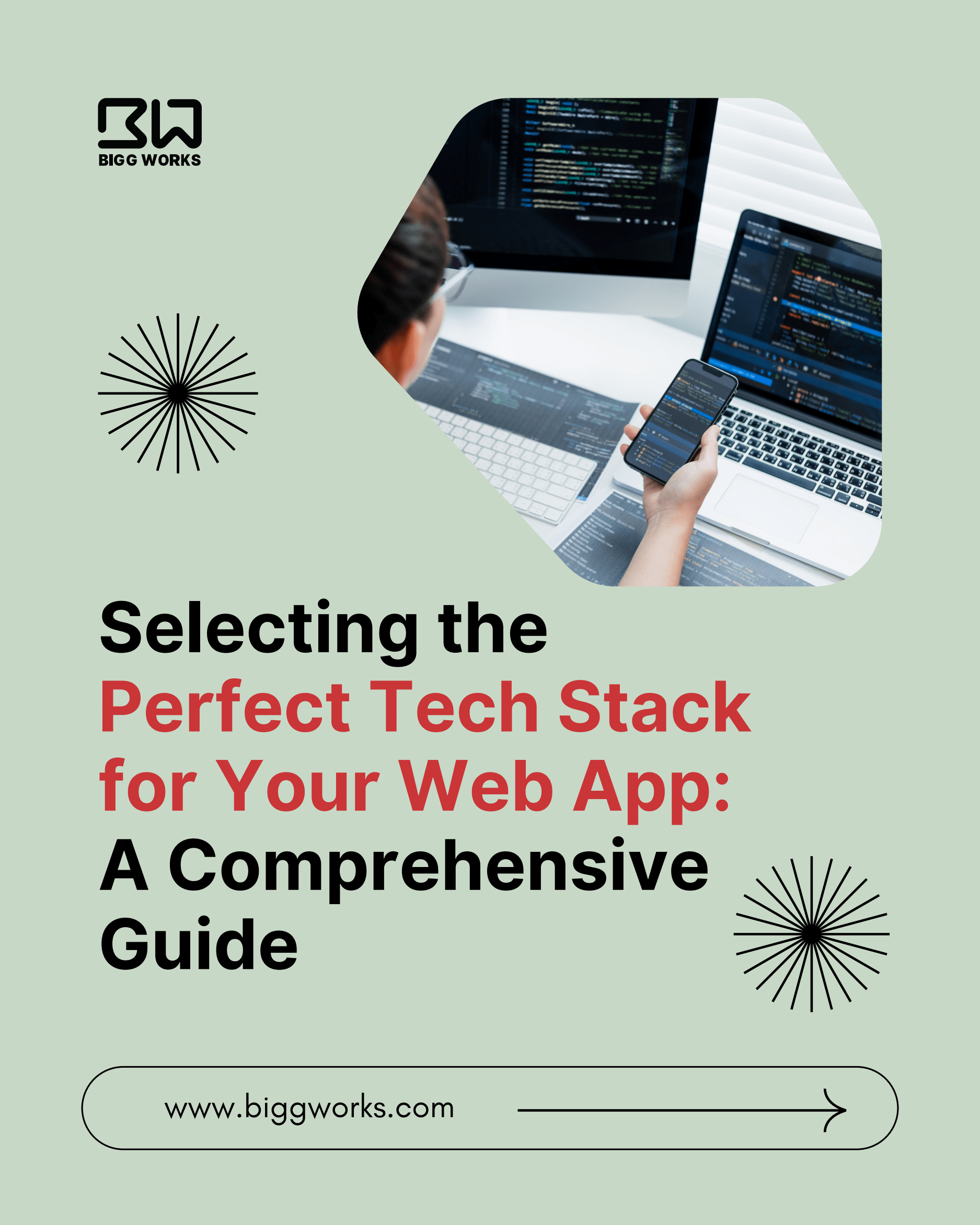Selecting the Perfect Tech Stack for Your Web App: A Comprehensive Guide

Creating a successful web app hinges on the strategic selection of a tech stack that aligns with your project's requirements and goals. This comprehensive guide explores the key factors to consider when choosing the right technology stack for your web app development journey.
A tech stack is the collection of technologies, tools, and frameworks used to build a web app. It's divided into two main components: the frontend and the backend.
Project Requirements:Begin by defining your project's scope, functionality, and user expectations. Consider whether the app requires real-time features, complex interactions, or extensive data processing.
Programming Languages:Choose languages that suit your project. For frontend, options include HTML, CSS, and JavaScript (with frameworks like React, Angular, or Vue). Backend languages like Python, Ruby, Node.js, or PHP offer varying strengths.
Database Selection:Evaluate the nature of your data and the required database functionalities. Choose from relational (MySQL, PostgreSQL) or NoSQL (MongoDB, Firebase) databases.
Server and Hosting:Select a server technology that aligns with your app's needs, such as Apache, Nginx, or Microsoft IIS. Choose a hosting solution that ensures reliability, scalability, and security.
Frameworks:Frameworks expedite development. Choose frontend frameworks for structured UI development (Bootstrap, Materialize), and backend frameworks for efficient coding (Django, Ruby on Rails, Express.js).
Scalability:Plan for future growth. Ensure your chosen stack can scale to accommodate increasing user traffic and demands.
Community and Support:Opt for technologies with active communities, ensuring access to resources, tutorials, and updates.
Budget and Time:Consider development time and potential licensing costs when selecting technologies.
User Interface (UI):Choose a frontend framework that streamlines UI development and offers responsive design capabilities.
User Experience (UX):Select tools that enhance user experience, including animations, transitions, and accessibility features.
Browser Compatibility:Ensure your chosen stack supports major web browsers to offer a consistent experience to users.
Server Environment:Choose a server environment (Linux, Windows) based on your familiarity and project requirements.
Database Management:Select a database system that aligns with your data structure and querying needs.
API Integration:If needed, integrate third-party APIs for enhanced functionality and data enrichment.
Security Measures:Prioritize security by choosing technologies with strong security features and a track record of addressing vulnerabilities.
Testing Frameworks:Opt for testing frameworks that ensure your app functions seamlessly across different devices and browsers.
Balance and Compatibility:Achieve a harmonious balance between frontend and backend technologies, ensuring smooth interactions and data flow.
Flexibility:Be open to adopting new technologies or updating existing ones as your project evolves.
Choosing the right tech stack for your web app involves careful consideration of project needs, compatibility, scalability, and developer expertise. By meticulously evaluating each component of the stack, you set a strong foundation for a successful web app that meets user expectations, performance benchmarks, and business goals.
#WebDevelopment #WebApps #WebDesign #FrontEnd #BackEnd #Programming #Coding #SoftwareEngineering #UIUX #FullStack #JavaScript #HTML #CSS #ReactJS #NodeJS #PHP #Python #WebDeveloper #MERN #MEAN